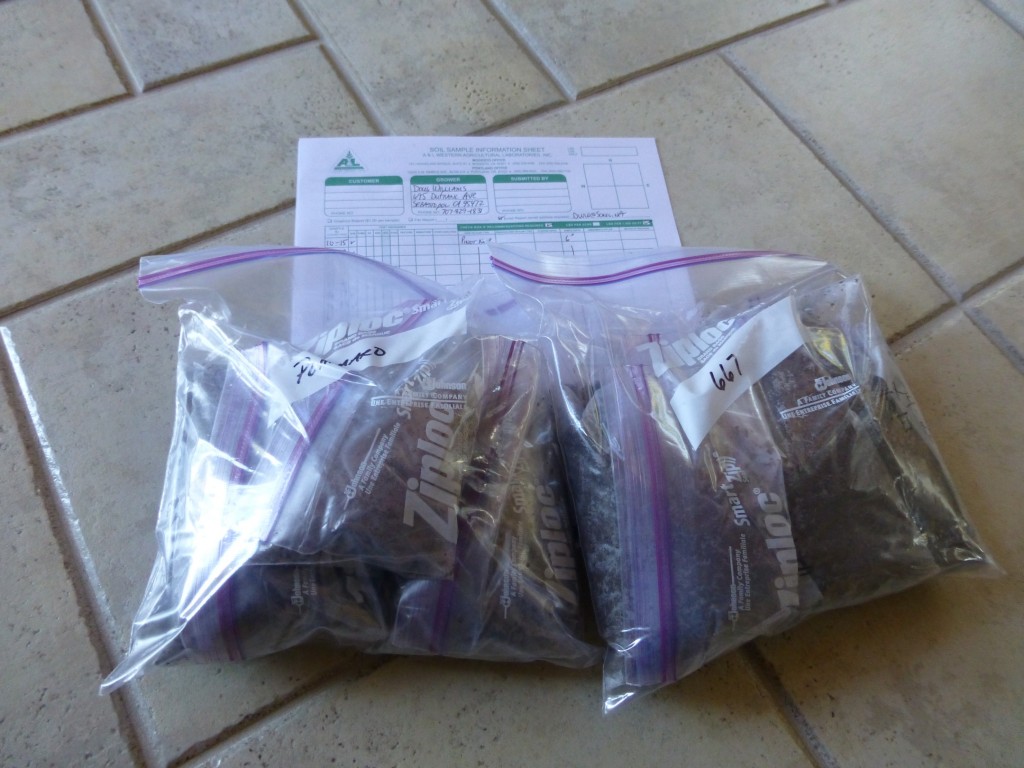
Ever since we planted our two clones of Pinot noir, Pommard and 667, they have grown at different rates. The Pommard is wonderful but the 667 is weak. I have heard from many growers that the 667 is just slower to take hold, yields a little less than the Pommard but makes great wine. I want to make sure it is not the soil, so I took 10 samples in the vineyard and sent them off to A & L labs. Will get results next week. Don’t know what I’m actually hoping for…
Author Archives: Doug Williams
2012 Work Hours
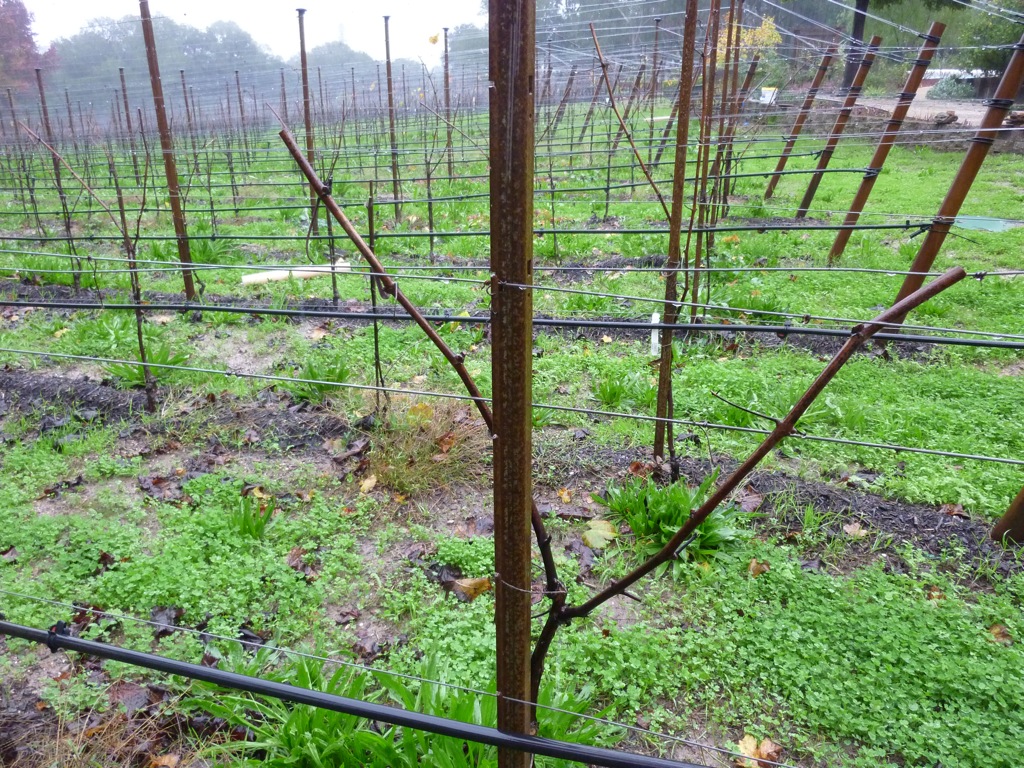 January 2 – 3 hours pruning and 6 hours hired pruning
January 2 – 3 hours pruning and 6 hours hired pruning
January 3 – 3 hours pruning
January 7 – 3 hours pruning – Done 58 hours total without counting chipping
January 9 – 1 hour tying
January 10 – 2 hours tying
January 22 – 7 hours hired tying
January 23 – 2 hours tying
January 29 – 3 hours soil sampling/piping and 7 hours hired tying
January 30 – 1 hour gopher/weed
January 31 – 2.5 gopher/tying
February 1 – 1.5 hours tying
February 2 – 1 hour gopher/tying
February 3 – 1 hours gopher/tying
February 4 – 8 hours hired weeding/wine/irrigation + 6 hours weeding/gophers/wine
24 hours tying total vs 20 hours in plan
58 hours pruning vs 80 hours planned
Next big project – disbudding
Gopher Count
 Gophers started showing a few days ago (late January)…so time for a little trapping and hawk feeding. Have to get them now through end of March as they have babies in the spring.
Gophers started showing a few days ago (late January)…so time for a little trapping and hawk feeding. Have to get them now through end of March as they have babies in the spring.
January 30 – 1
January 31 – 2
February 1 – 0
Feb 2 – 0 (one was injured)
Feb 3 – 0
Feb 5 – 0
Feb 6 – 1
Vacation
Feb 18 – 1 (Only 1 spot left at this time)
March 15 – 1 small one…they must have mated in February…bad!
March 25 – 4 – new record, with 4 traps
March 27 – 1…1Q – 11
April 1 – 1
April 8 – 1
April 16 – 3
A little vacation from gophering
May 3 – 1 (very big in section 1)
May 31 – 1 drowned in the pool, yes it really happened
Innerstave or Xtraoak
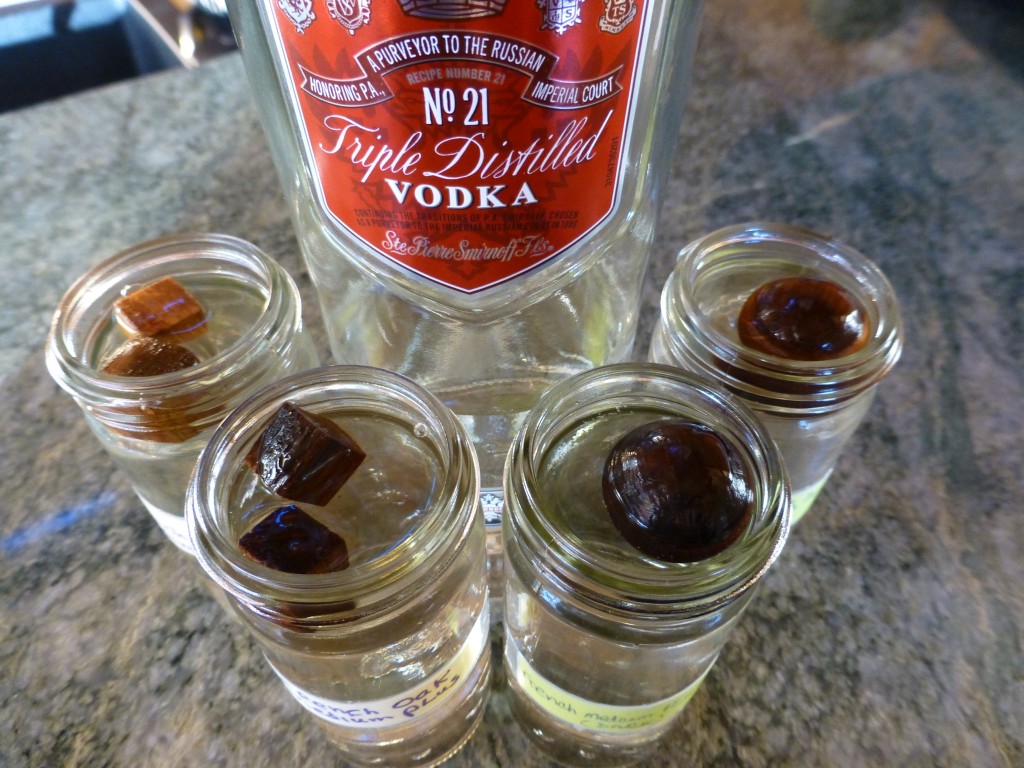 How do you get “Oak” flavor in your wine when you don’t have and expensive and highly variable French Oak Barrel?
How do you get “Oak” flavor in your wine when you don’t have and expensive and highly variable French Oak Barrel?
Our wine is stored in an environmentally friendly, polyethylene, oxygen permeable flex tank. This is a fairly new technology in Napa and Sonoma but is widely used in Australia and New Zealand, especially for white wines. Besides saving trees and saving storage space, this allows me to carefully control the oak flavoring with high quality, toasted French oak adjuncts and avoids the random flavors and possible pathogens from commonly purchased “used” barrels. It also allows us to make more consistent wine from year to year.
So, as we are engineers, we purchased oak balls and squares from 2 vendors in medium and medium + toast (how long they blacken the outside). Next we are soaking them in vodka and then in a few weeks we will taste them to determine which to purchase and put in our wine. Lastly, we will then only use 1/4 of what is recommended, let it soak for a month and evaluate how it reacts with the wine. You can always add more, but you can’t take the flavor away!!!
Tying up next years crop !!!
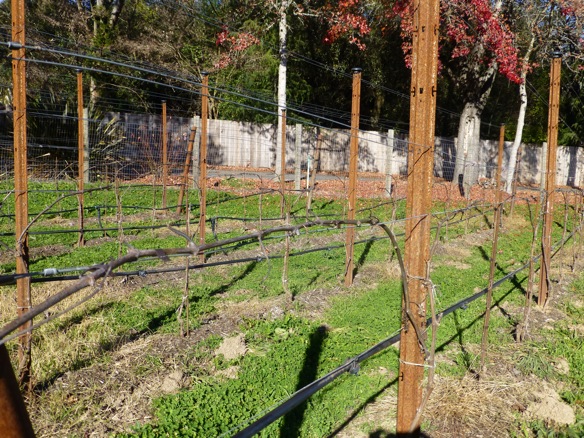 Last year I tied up the trunks of the vines to the rebar and had a few plants that I could leave canes. Most of them were very short and they did not need tying to the wire. THIS YEAR is much different. Probably 70% of the vines will end up with canes (arms that are grown back each year) so instead of only 4 buds per vines I will probably average at least 12 buds on healthier plants to a maximum of 16 buds. So…what does that mean. I’m hoping for 3-4 times as much tonnage, so instead of 1300 pounds, I’ll have 2 to 2.5 tons…eventually 5 tons in two more years.
Last year I tied up the trunks of the vines to the rebar and had a few plants that I could leave canes. Most of them were very short and they did not need tying to the wire. THIS YEAR is much different. Probably 70% of the vines will end up with canes (arms that are grown back each year) so instead of only 4 buds per vines I will probably average at least 12 buds on healthier plants to a maximum of 16 buds. So…what does that mean. I’m hoping for 3-4 times as much tonnage, so instead of 1300 pounds, I’ll have 2 to 2.5 tons…eventually 5 tons in two more years.
Just a reminder…last year in February I guessed 1400 lbs. and missed by 100 lbs., so I’m hoping this guess is a good one…of course the growing season in 2012 was the best in years!!!
The pictures below show a close-up of a good vine (on left) that is tied to the wire and a vine that did not grow enough (on right) that is still a stick and only tied to the rebar. The one of the left will produce 3 lbs. and on the right only about 0.5 lbs.
First Unbiased Opinions
 Well, I have been tasting my 2012 Turtle Vines Pinot every time I sulfur, but today was the first time I had an outside opinion. Joey, Cody and Andrea tasted it on Saturday and they liked it! So happy…they tasted the “Free Run”. The color was wonderful, a nice maroon. Taste was smooth but obviously young. It does not have any oak flavor yet or been mixed with the “Pressed”. I think this will be wonderful wine.
Well, I have been tasting my 2012 Turtle Vines Pinot every time I sulfur, but today was the first time I had an outside opinion. Joey, Cody and Andrea tasted it on Saturday and they liked it! So happy…they tasted the “Free Run”. The color was wonderful, a nice maroon. Taste was smooth but obviously young. It does not have any oak flavor yet or been mixed with the “Pressed”. I think this will be wonderful wine.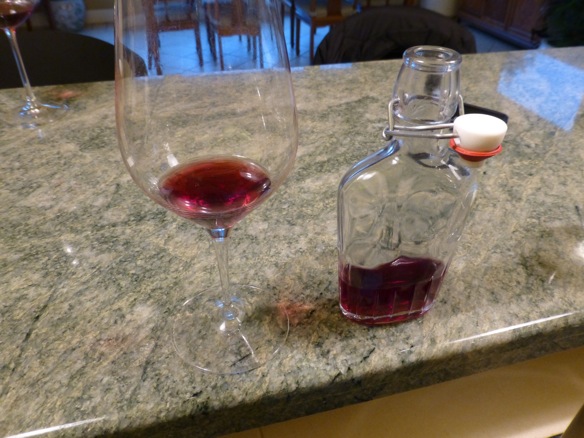
Holiday Cheer
Just a cute holiday wine jpg my cousin sent me via Facebook. Thanks Connie !
May you enjoy health, peace, joy and GOOD wine in 2013
Doug at Turtle Vines
PS My Pinot won’t be ready until 2014…I’ll just have to drink other Russian River Valley wine in the meantime.
Sulfuring Wine
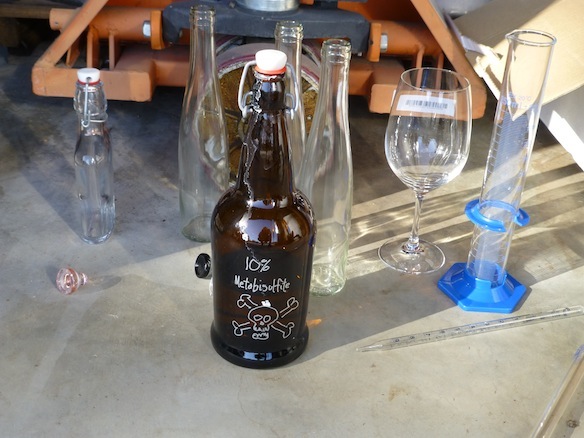 There is a lot of talk here in Sonoma County about “Natural Wine”. For most people that means allowing the grapes to ferment with “Native Yeast” (found naturally on the grape clusters), no filtering or fining and not adding yeast to preserve the wine.
There is a lot of talk here in Sonoma County about “Natural Wine”. For most people that means allowing the grapes to ferment with “Native Yeast” (found naturally on the grape clusters), no filtering or fining and not adding yeast to preserve the wine.
I like the idea but it has risks. For yeast…the yeast strain will help determine the taste of the wine. I may do this eventually, but for now I would like this control and I don’t see anything wrong with controlling the yeast. It’s not like it is GMO or anything. I fully agree with not fining or filtering. You can get beautiful wine without these techniques, especially for red wine. Lastly, sulfur…this has the most risk and I think the lowest reward. Sulfur has been used for hundreds of years to prevent wine from spoiling and it also controls the fermentation process. If you do not use sulfur the wine can go bad quickly and taste/smell funky, although some wineries are successful without it, I don’t want to take that chance. FYI…US law requires wine with total sulfites over 10 ppm to have a warning CONTAINS SULFITES. US organic standards allow 100 ppm in wines. The maximum limit for wines in the US is 350, with most wines between 80 and 120 ppm.
Sulfur is added during fermentation to control spoilage. A lot of the sulfur gets removed with the skins at pressing. When the wine is put to a vessel for aging, you need to add sulfur so that it does not go bad. Not to get to technical, but with a low pH wine you need less sulfur than a high pH wine. If you read earlier in the blog, my wine had a pH of between 3.7 and 3.8. So…I need around 50 ppm of sulfur to ensure it does not go bad.
The picture above is a test kit that determines the sulfur level. With this color I determined I had around 18 ppm sulfur in the wine, so I had to add 30 ppm. In total I added 35 ppm at fermentation, 15 ppm one month after I started aging and another 30 ppm on December 7th. I will probably have to add around 9 ppm sulfur every month until bottling as the sulfur is used up during the aging process and will settle out on the bottom.
Lastly, tannin in wine will also act as a natural anti-oxidant. So, if you are going to purchase organic wine, I would suggest red instead of white and make sure it is not to old.
Watering Improvements for 2013
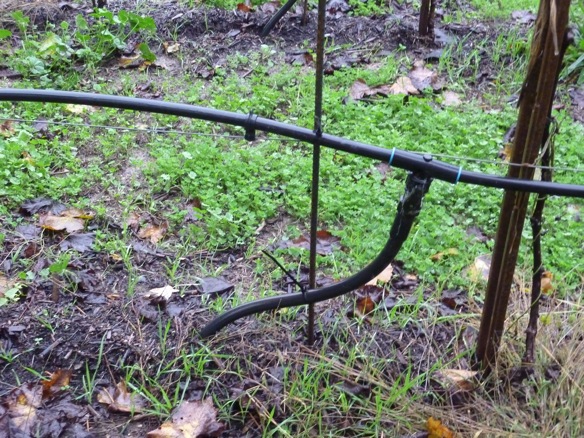 Why am I moving the hoses? Well…when I put the irrigation hoses in I put the drips about 6” uphill from the vines with the connection hoses vertical. Now, I want to move them in-between the vines so that the roots will seek out water. Secondly, I needed to put in rebar next to the hose to make sure it does not stick out in the row when I mow…this the black ties. Lastly, at the end of the rows I used long black ties to secure the end of the hose to the endposts. This will keep the hose from drooping during the year and give it that finished look.
Why am I moving the hoses? Well…when I put the irrigation hoses in I put the drips about 6” uphill from the vines with the connection hoses vertical. Now, I want to move them in-between the vines so that the roots will seek out water. Secondly, I needed to put in rebar next to the hose to make sure it does not stick out in the row when I mow…this the black ties. Lastly, at the end of the rows I used long black ties to secure the end of the hose to the endposts. This will keep the hose from drooping during the year and give it that finished look.
These little items are perfect winter projects, and they will make my life much easier next year.
Fall Pruning
 Most folks prune in the winter months of January/February. Mainly it is because if you prune in the fall the vines will bud earlier in the spring, and if they do and you get a hard freeze then you will lose most of your crop. Here in Sebastopol, I have not seen hard frosts the end of March to mid-April. So, I am going to begin pruning now as it will take me at least 80 hours this year to prune and probably 120 hours in future years. This will spread out my work thoughout the year, without the mad rush in February/March/April. Hopefully I’m right about the frost timing.
Most folks prune in the winter months of January/February. Mainly it is because if you prune in the fall the vines will bud earlier in the spring, and if they do and you get a hard freeze then you will lose most of your crop. Here in Sebastopol, I have not seen hard frosts the end of March to mid-April. So, I am going to begin pruning now as it will take me at least 80 hours this year to prune and probably 120 hours in future years. This will spread out my work thoughout the year, without the mad rush in February/March/April. Hopefully I’m right about the frost timing.
November 10 – 1 hour
November 12 – 4.5 hours and 4.5 hours hired
November 13 – 5.5 hours and 5.75 hours hired (1050 vines completed)
November 23 – 4 hours hired fixing drip lines
November 24 – 2 hours hired fixing drip lines
November 26 – 5.5 hours hired and 4 hours pruning
December 11 – 3 hours pruning
December 28 – 3 hours hired pruning
December 29 – 4 hours hired weeding
December 31 – 6.5 hours hired pruning
January 2 – 6 hours hired and 3 hours pruning
January 3 – 3 hours pruning
January 7 – 3 hours pruning … Done!
Total – 58.25 hours vs 2013 plan of 80 hours…off to a good start, better than plan!
